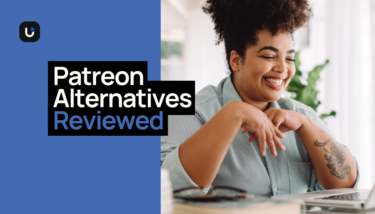If you’ve ever asked yourself, “How can I earn more from the content I already create?” – you’re in the right place.
Whether you’re running a membership site, selling digital products, or monetizing on social platforms, chances are you’ve hit a ceiling with subscriptions, ads, or inconsistent course launches.
That’s where Premium Video On Demand (PVOD) comes in.
The PVOD model gives you the freedom to sell your most valuable video content on your own terms, at your chosen price, and without relying on algorithms or sponsorship deals. It’s the model behind blockbuster movie releases and exclusive content drops – and now, it’s a powerful revenue tool for independent creators too.
In this guide, we’ll walk you through:
- What PVOD is (and how it differs from SVOD, TVOD, and AVOD)
- The key benefits PVOD offers creators and businesses
- When to use PVOD in your content strategy
- A step-by-step breakdown for launching your first PVOD release
- Common challenges (and how to overcome them)
- Why Uscreen is the best platform to make it all happen
By the end, you’ll have a clear roadmap to add PVOD to your monetization strategy – so you can earn more, offer more, and stay in full control of your video business.
Let’s dive in.
What is PVOD Streaming?
PVOD, or Premium Video On Demand, is a monetization model where creators, studios, and streaming platforms sell access to high-value video content at a premium price – typically for a limited time or during early release windows.
PVOD offers viewers exclusive, often time-sensitive access to content before it becomes widely available elsewhere. Think: newly released movies, live performances, exclusive interviews, or early-access training modules.
How it works:
- Viewers pay per video, typically at a higher price point than standard rentals.
- Content is exclusive or early-access, which justifies the premium.
- Creators retain full control over pricing, timing, and distribution.
For example, Art of Jiu Jitsu (AOJ+) uses PVOD to sell premium on-demand content, like their Nogi System Masterclass Bundle.
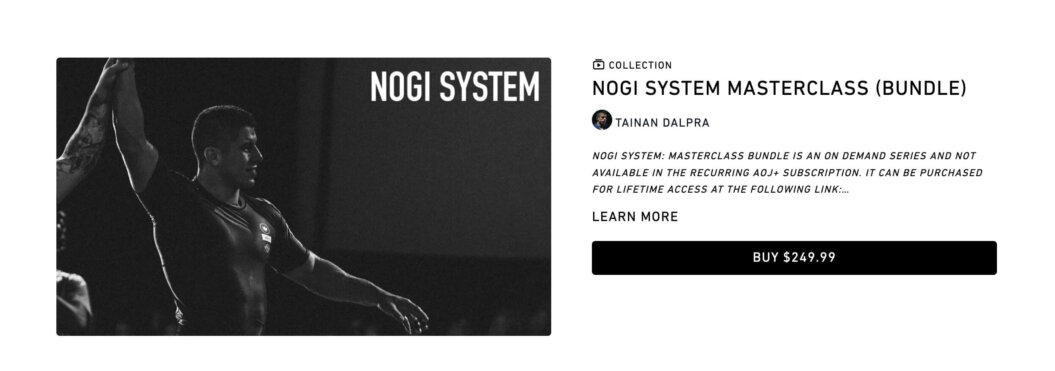
Fans and athletes can purchase individual videos for lifetime access, allowing AOJ+ to monetize exclusive content at a premium, outside of a subscription model. It’s a perfect example of how creators can use PVOD to deliver high-value experiences –and get paid accordingly.
The 3 benefits of PVOD streaming for creators and businesses
If you’re looking to break free from ad revenue or inconsistent course launches, PVOD gives you a smarter, more controlled way to monetize your content – on your terms.
1. Charge more, earn more
With PVOD, you’re not locked into subscriptions or ad views. You can price your content based on its true value – whether it’s a high-production workshop, a one-time concert stream, or early access to a course.
Traditional studios and streaming services have used this model to generate millions through digital-first film releases. Now, creators like you can do the same – without needing a Hollywood budget.
GVAA On Demand is a great example. They sell access to expert-led voiceover workshops and casting sessions, like their premium webinar with Emmy-winning director Sam Riegel.
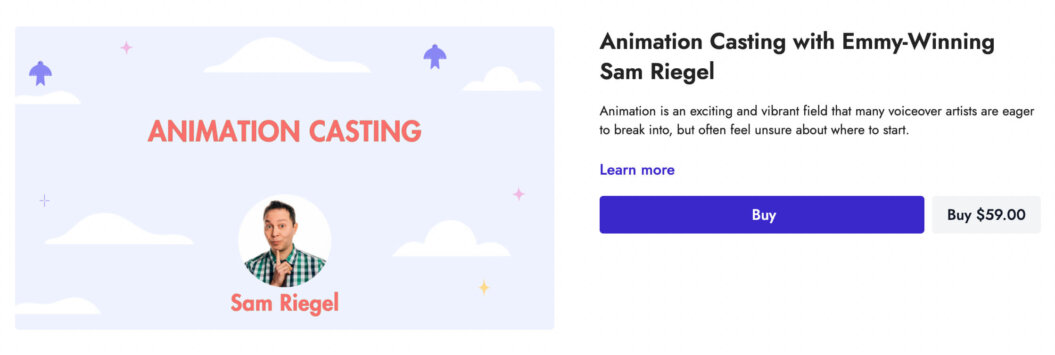
These are high-value, one-time purchases, priced for the expertise and exclusivity they deliver. The result? A strong revenue stream built around premium content that fans are eager to pay for.
2. Diversify your income
Already have a video subscription platform? Maybe you’re still testing the waters with the AVOD model through your YouTube channel.
Either way, PVOD is the perfect complement to any streaming business model. Use it to:
- Launch limited-time offers
- Test premium content before adding it to your subscription
- Monetize special collaborations or high-value releases
It’s a flexible way to add short-term cash flow without disrupting your long-term strategy.
Fittest Core, a fitness platform for expecting and new moms, combines PVOD with their SVOD membership model.
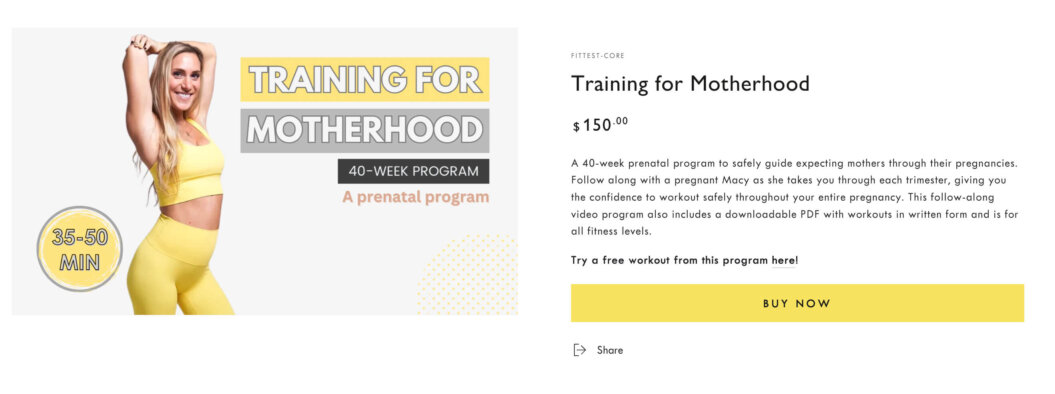
Members can subscribe for unlimited access to an ongoing library of workouts or purchase premium video bundles, like their “Training for Motherhood” program, on a one-time basis.
This hybrid model allows them to serve both long-term members and users who want specific, high-impact content without a subscription.
3. Build stronger audience relationships
People are willing to pay for access, especially when it feels exclusive or time-sensitive. PVOD lets you lean into that. Whether you’re delivering a one-night-only live stream or offering early access to a new series, you’re creating moments that your audience won’t want to miss.
And when people invest in your content, they’re more likely to stick around, engage, and support what you do next.
Filmmakers Academy is a prime example. They let new users create free accounts on their platform to explore parts of their private community – where members ask questions, network, and learn from mentors and peers.
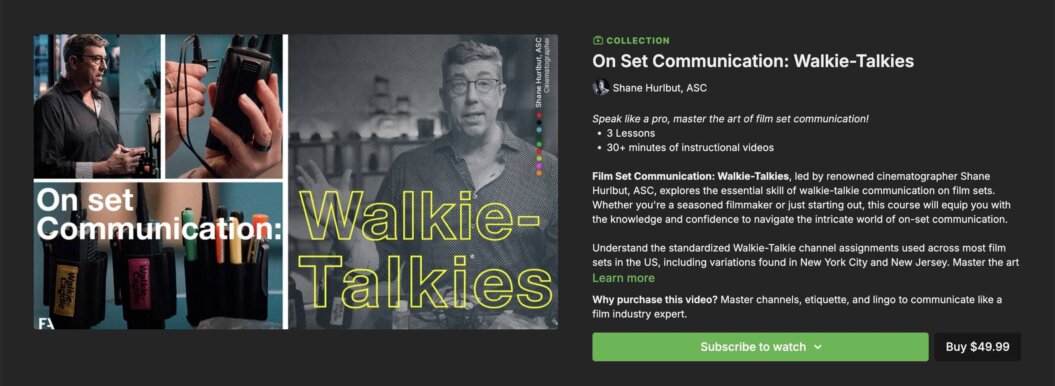
Often, what brings users in is a PVOD purchase (like a masterclass or cinematic breakdown). That single transaction opens the door to more meaningful participation, and many go on to upgrade to full memberships.
Our members are loving the new community where they participate in virtual networking, get their specific questions answered by FA mentors and experienced members, refer jobs to one another and seek opportunities to sharpen specific skills, participate in the FA Shadow program where they can practice skills in an on set environment and learn best practices.
Lydia Hurlbut, Co-Founder of Filmmakers Academy
How does PVOD compare to other monetization models?
Unlike other video monetization models, PVOD allows creators to maximize revenue by charging premium prices for exclusive and/or newly released content.
Here’s an overview of how PVOD compares to the other established monetization models:
| Model | Definition | Best For | Pros | Cons |
|---|---|---|---|---|
| PVOD (Premium Video On Demand) | Users pay a higher, one-time fee for early access or exclusive content. | Exclusive content, film releases, live-streamed events | Higher revenue per view; capitalizes on audience’s willingness to pay for exclusivity. | Limited to high-demand content; may not suit all types of creators or content. |
| SVOD (Subscription Video On Demand) | Viewers pay a recurring fee for unlimited access to content. | Membership-based content, ongoing value | Predictable, recurring revenue; fosters customer loyalty. | Requires a substantial content library to attract and retain subscribers. |
| TVOD (Transactional Video On Demand) | Users pay per video rental or purchase. | Pay-per-view, film rentals, episodic purchases | Direct revenue per transaction; suitable for individual videos or collections. | Revenue can be inconsistent; dependent on continual content promotion. |
| AVOD (Ad-Supported Video On Demand) | Free content supported by advertising revenue. | Mass audience reach, ad-driven revenue | Broad audience reach due to free access; ad revenue scales with viewership. | Revenue per viewer is typically lower; user experience may be impacted by ads. |
Each of these models serves different goals, but they can also be paired together in different combinations to help maximize your video monetization.
The streaming industry has seen many examples of this, from Hulu’s ad-supported subscriptions – to Amazon Prime’s transactional ‘Buy or Rent’ premium fee that stacks on top of their recurring subscription fee.
When should you use the PVOD model?
PVOD isn’t for every video you create, but when the timing and content are right, it can be one of the most powerful monetization tools in your toolkit.
Here are the key scenarios where PVOD shines:
- Exclusive content drops. Got content that your audience can’t wait to see? That’s prime PVOD material.
- Event-based streaming. Live or one-time events are perfect for PVOD. The time-sensitive nature makes your offer feel urgent and valuable.
- Early access models. Already using SVOD? PVOD is the perfect way to offer “watch it first” access to your most loyal fans.
- Special collaborations or high-production-value content. If you’ve poured time, money, or creative energy into something big, PVOD helps you earn it back before folding it into broader distribution.
Now, let’s explore how to set up your PVOD streaming!
The step-by-step of how to get started with PVOD
Step 1: Choose your base monetization model (and get it set up)
Before you add PVOD to the mix, start by building the foundation of your video business.
That means choosing your base model:
- SVOD if you want predictable recurring income from memberships
- TVOD if you prefer one-off sales for specific content
- AVOD if you’re starting with free, ad-supported content
Need help deciding which model is right for you?
SVOD explained: Why it’s the best monetization model for creators

Once you’ve chosen your base, it’s time to:
- Set your core pricing
- Design your offers and tiers
- Choose a video monetization platform that supports PVOD alongside your base model
Check out our in-depth guide to launching your VOD business!
How to create a video on demand website that your customers will love (+ downloadable checklist)

Step 2: Identify your PVOD content
Not all content is a fit for PVOD – and that’s a good thing. PVOD works best when what you’re offering is exclusive, time-sensitive, or high-value.
Here’s what strong PVOD content often looks like:
- A live-streamed event (concert, class, behind-the-scenes shoot)
- An early release of a series or docuseries
- A one-off premium drop like a masterclass or collab with another creator
- A seasonal or limited-edition piece (think holiday content, event coverage)
Here are a couple of niche-specific examples:
- A fitness instructor releasing a live “30-Day Challenge” series as a limited-time PVOD bundle
- An educator offering a high-ticket webinar for early access before it becomes part of a membership
- A filmmaker dropping an exclusive director’s cut available only for 72 hours
💡Ask yourself: Would someone pay for this if they couldn’t get it anywhere else – at least not right now?
Step 3: Price your PVOD content
You don’t have to guess when it comes to pricing. PVOD allows you to test what your audience is willing to pay and adjust from there.
Here are a few smart pricing models to start with:
- Fixed one-time price (e.g., $9.99) for access to a specific video or event
- Rental model for short-term access (24-72 hours)
- Bundle pricing for themed collections or series
💡Tip: If it’s live, limited, or part of a high-effort production, you can confidently charge more.
Still unsure? Start small, gather feedback, and test. You can always raise your price after the first release.
Step 4: Create a marketing plan to build hype for your PVOD release
This is where you turn a launch into an event. PVOD performs best when your audience knows it’s coming and feels excited (and a little urgent) to grab it before it’s gone.
There are many PVOD release strategies to test out, but here are some effective best practices for promoting your new releases on your own platform:
Pre-Launch: building anticipation
- Build a landing page teasing what’s coming
- Email your list with “coming soon” sneak peeks
- Share countdowns or trailers on social
- Offer early-bird pricing or VIP access to warm audiences
Launch: guiding your audience to convert
- Announce the drop via email and social
- Add a limited-time offer window (e.g., “Available for 72 hours only”)
- Include testimonials or social proof if possible
- Use Uscreen’s abandoned cart and email tools to re-engage those who almost converted
💡Tip: Treat this like a product drop. The more anticipation you create, the more likely your audience is to convert.
Common challenges with PVOD + how to overcome them
Let’s be honest: Launching a PVOD offering can feel like a big leap. You might be wondering: Will people really pay? How do I set the right price? What if the tech is overly complicated?
Here’s the good news: These concerns are normal – and solvable. Let’s break them down.
Challenge: “I don’t know how to price my content.”
This is one of the most common hang-ups. The truth is: your audience is willing to pay; you just need to match the price to the value.
Try this:
- Start with one video or event at a modest but confident price point
- Offer limited-time discounts to incentivize early adopters
- Use feedback and sales data to test and adjust
Remember, premium content deserves premium pricing. Don’t sell yourself short.
If you want to skip the guesswork, check out our free tool + in-depth guide on pricing video content!
Use our free tool to pinpoint your ideal membership price in just 3 steps, leveraging a decade of data.
Challenge: “What if my audience doesn’t understand why it’s paid?”
Your audience may be used to free content. That’s okay. You just need to help them understand why this is different.
Make it clear:
- Highlight what makes the content exclusive (early access, live interaction, special format)
- Show previews or trailers to build excitement
- Frame it as an experience, not just a video (“Watch before anyone else,” “Limited-time access,” etc.)
Need some support finding the right words? Check out our guide to crafting messaging that converts!
How to Craft Effective Membership Messaging That Converts
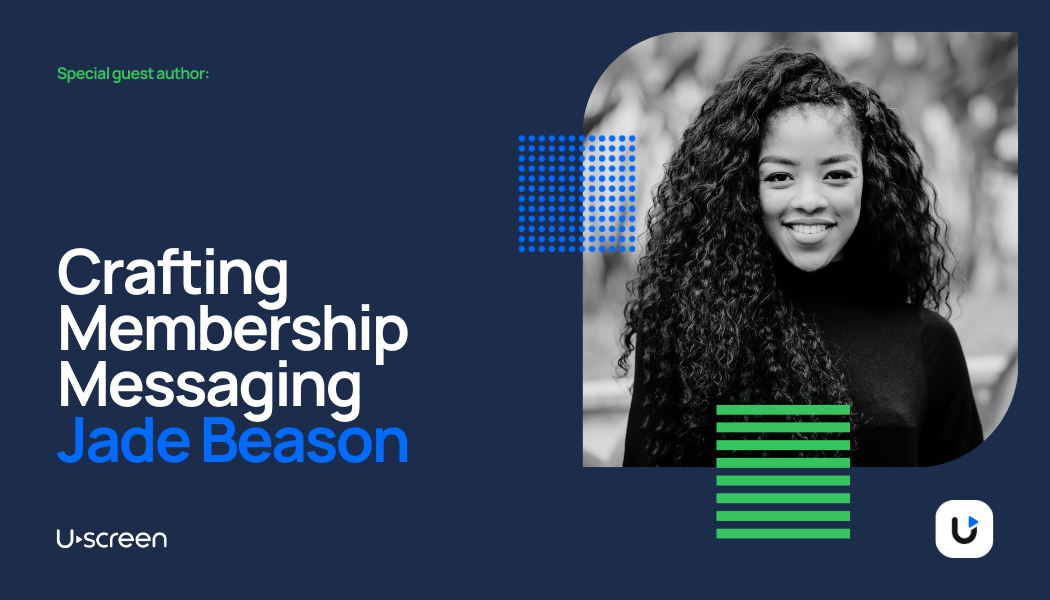
Challenge: “I’m not sure how to promote it.”
PVOD requires a bit more marketing muscle than a free YouTube drop. But it doesn’t need to be overwhelming.
Focus on:
- Email your list with early-bird pricing or pre-access invites
- Share teasers and behind-the-scenes clips on socials
- Add countdown timers or access deadlines to create urgency
- Position it as an event, not just content
Master your marketing with tips and steps from our in-depth guide on funneling your audience into your paid platform:
How to Effectively Funnel People into Your Membership in 6 Steps
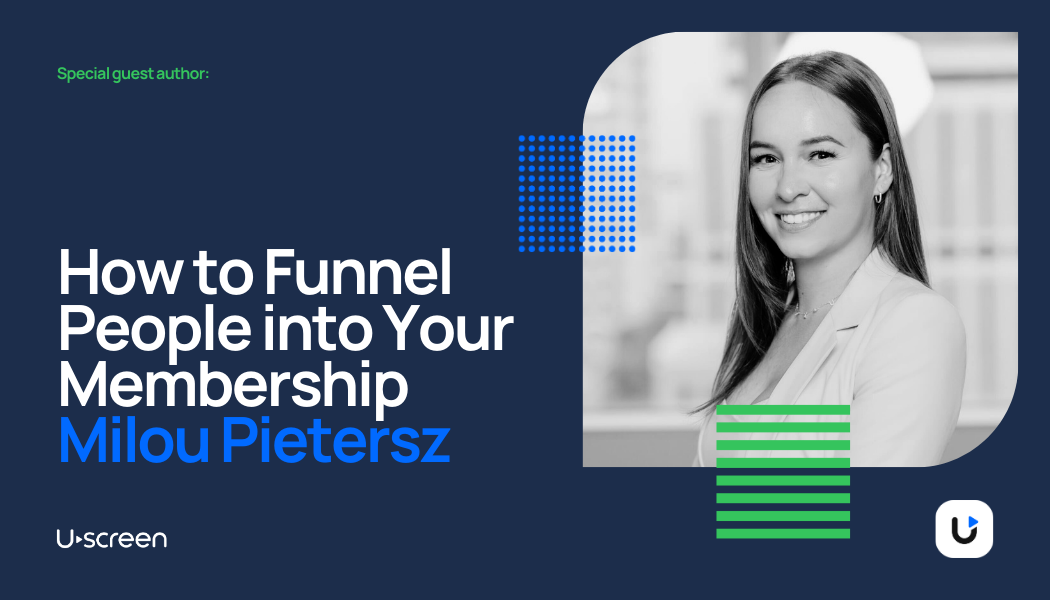
Challenge: “Tech setup seems too complicated.”
If you’re not a developer or don’t have a team, setting up payments, access, and delivery can feel like a blocker.
The fix:
Use a video monetization platform that does the heavy lifting and handles:
- Secure payments
- Timed access and rentals
- Branded apps and streaming
- Analytics and audience data
You get full control without needing to code or cobble together plugins.
We’ve always wanted to just be a creative team that’s focused on content creation—not building apps or figuring out how to sync up databases to do basic stuff. So Uscreen has allowed us to just not worry about any of that anymore.
Chris Sharpe, Co-Founder & COO, Find What Feels Good
Choosing Uscreen as your PVOD platform
Selecting the right platform is crucial for maximizing the potential of PVOD. While various VOD platforms support pay-per-view and transactional video models, Uscreen stands out as an all-in-one video monetization solution designed specifically for content creators, media businesses, and live event broadcasters.
Uscreen offers a user-friendly, scalable PVOD solution that allows creators to set their own pricing, customize their video storefront, and distribute content across multiple devices – all without requiring advanced technical knowledge.
PVOD doesn’t have to be a standalone revenue stream either, it can be integrated into broader monetization strategies on our platform. Uscreen enables creators to:
- Combine PVOD with SVOD. Offer premium content as one-time purchases while maintaining a subscription-based membership for ongoing content.
- Create upselling opportunities. Encourage users who purchased PVOD content to subscribe for additional benefits or related content.
- Leverage memberships. Use PVOD as a way to attract new customers, then convert them into long-term subscribers.
- Retain customers through exclusive access. Offer PVOD buyers early or exclusive access to upcoming content, increasing audience engagement and loyalty.
Whether you’re an independent filmmaker, a fitness instructor, or a business offering educational content, Uscreen provides the tools needed to monetize premium content effectively.
Build, launch and manage your membership, all in one place.
Conclusion
If you’ve been looking for a monetization model that gives you more control, higher earning potential, and a direct connection with your audience, PVOD checks every box.
It’s not just for big studios or live events. It’s for creators like you who:
- Want to deliver premium, high-impact content
- Are tired of ad-based scraps or inconsistent course launches
- Value their audience enough to offer them something worth paying for
And with platforms like Uscreen, launching PVOD doesn’t require a tech team or a massive content library. You can start simple – with one great piece of content – and scale from there.
Want to take the next step? Start by identifying one video your audience would pay to see – then put it behind a paywall and invite them in. If you’re serious about turning your video content into a real business, PVOD isn’t just an option – it’s an edge.


